On test: Can-Am Outlander Pro HD7 packs gutsy 50hp engine
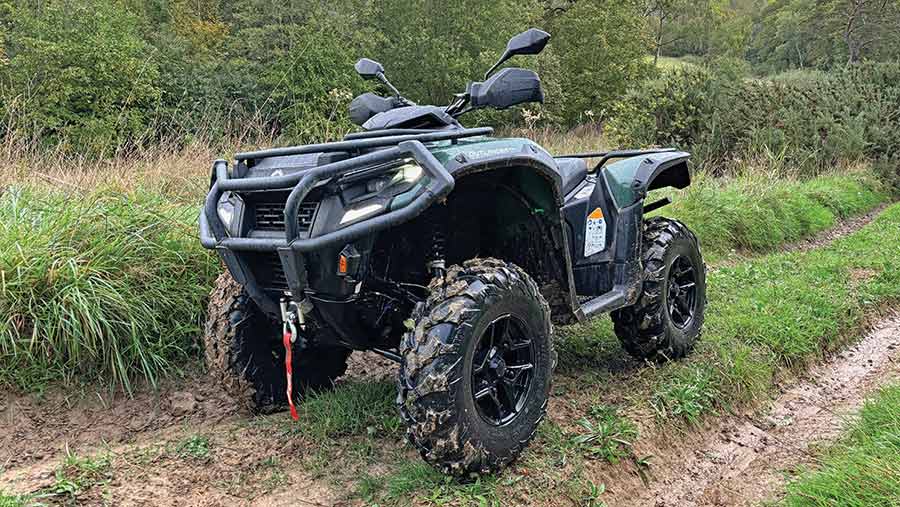 Can Am Outlander HD7 © James Andrews
Can Am Outlander HD7 © James Andrews Built to satisfy the tastes of demanding North American buyers, Can-Am ATVs have always been powerful, comfortable and loaded with optional extras.
But the payoff compared with tough-as-old-boots Japanese bikes has been their convoluted care regime, particularly for those allergic to grease guns.
This could be about to change, as the Canadian-based manufacturer has ripped up the blueprints for its popular Outlander 450 and 570, replacing them with two new models – the Outlander Pro HD5 and HD7.
See also: ATV buyer’s guide 2023-24
More and bigger are the general themes, with an extra couple of horsepower for both models, a wider wheelbase, higher ground clearance and extra storage.
But there is an important less, which is the amount of time and expense required to keep them running.
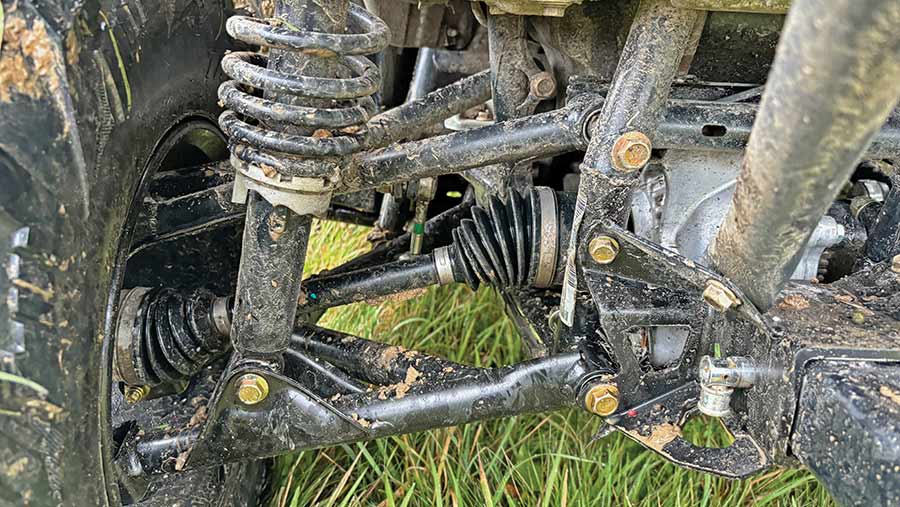
Grease-free suspension pivots © James Andrews
This has been achieved by replacing the greaseable suspension pivots – there used to be four of these on each corner – with maintenance-free rubber bushes, just like a Honda or Suzuki.
The transmission has been overhauled too, with a host of benefits including less strain on the belt and improved airflow so that it has a longer lifespan.
Service intervals have also been stretched to every 3,000km, and engineers have made key components easier to access.
New chassis
To begin comparing old with new, the chassis is the obvious place to start. This has been completely redesigned, making the bike bigger and delivering the desirable characteristics mentione earlier.
Bulk isn’t necessarily a good thing for an ATV, so Can-Am has worked hard to make it handle something much smaller.
Tricks employed by engineers include giving it a tight turning circle, a nicely weighted power steering system (providing you pick a model with this included) and a narrower engine bay.
This has been achieved by flipping the block 180deg, allowing the exhaust to exit at the rear rather than having to loop around the side of the engine.
An added benefit is that it keeps heat away from the rider’s legs, something that’s particularly noticeable when hopping between generations of bike.
But despite all these efforts, it’s still a hulking great machine with a wheelbase that’s only 43cm shorter than a grey Fergie.
This is apparent when manoeuvring in tight spaces, and when regularly climbing on and off the seat.
No more V-Twin
While the old Outlander 450 had a Rotax single-cylinder engine and the 570 a V-Twin, their HD5 and HD7 replacements are both fitted with the same 650cc single-cylinder unit, albeit in different states of tune.
This gives buyers the option of 40hp or 50hp, depending on how much poke they think they require, which is 2hp more than their predecessors.
In reality, 40hp is more than adequate for most buyers, but quirks of Can-Am’s bewildering spec sheet mean the HD7 could end up being the most popular among agricultural buyers.
For that reason, we’ve concentrated here on the high-spec HD7 XU T, which comes complete with power steering, ABS brakes, adjustable engine braking and is homologated for road use.
On the performance front, the old V-Twin isn’t really missed. The single-cylinder flies, as you’d might expect considering the power, and it’s been configured to deliver plenty of torque at low revs.
With a single piston thumping up and down in the bore, it’s never going to sound as smooth as the purring twin-cylinder setup though.
Can-Am Outlander Pro HD7 XU T specs
- Engine Rotax 650cc single cylinder
- Power 50hp (HD5 has 40hp)
- Transmission Belt CVT with pDrive clutch
- Braked towing capacity 830kg
- Rack capacity 110kg rear, 55kg front
- Dry weight 378kg
- Starting price £10,165 (HD5 starts at £8,249)
Old Outlander model specs
- Outlander 450 – 38hp, 427cc single-cylinder
- Outlander 570 – 48hp, 570cc V-twin
Slicker transmission
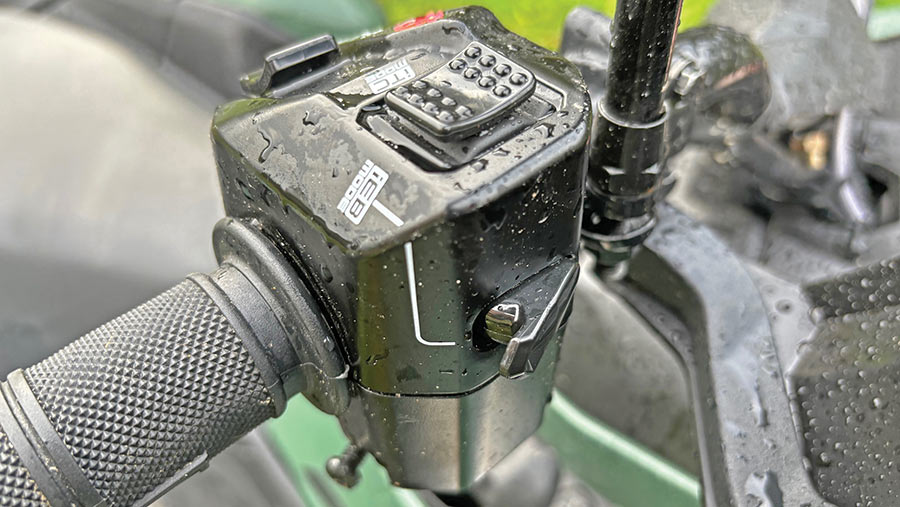
IEB engine braking © James Andrews
Outlanders are notorious for their clunky gear change, which has tended to require a rocking motion to get it into the right cog, particularly when parked on an incline.
Keen to make the “Can-Am shuffle” a thing of the past, engineers have completely redesigned the box. It works too, as it’s now effortless to shift.
The belt CVT has also had some attention, with a new pDrive centrifugal clutch.
This has uprated metal rollers that are designed to reduce slack and give smoother, more positive engagement and disengagement of drive as it opens and closes.
In doing so, it should help the belt tighter and reducing the amount of wear. Can-Am says belt longevity helped further by improving airflow through the transmission, thus reducing the amount of heat build-up.
From the seat, drive engagement is indeed snappy and smooth, but we’ll have to wait and see the effect the changes have on belt lifespan.
Another addition is a three-stage engine braking system, which is adjusted using a button on the handlebars.
There is a noticeable difference to how controlled the bike is on steep descents and, on the most severe setting, brakes are rarely required, even with a heavy trailer behind.
However, it is worth noting that this feature is only available on higher spec models, and those without it offer much less assistance. In fact, they’re not as good in this department as the old 450.
Load lugger
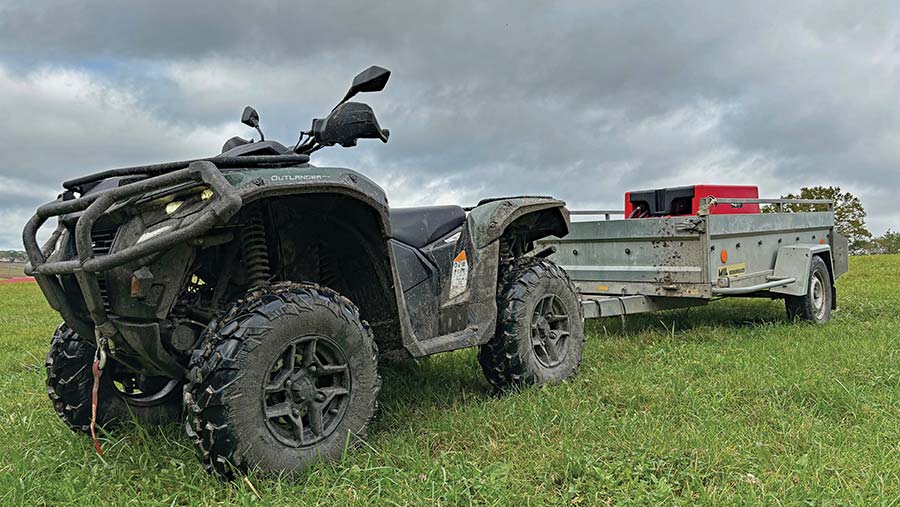
Cam Am Outlander towing © James Andrews
Not to be outdone on its working credentials, Can-Am has given the bike a generous 830kg towing limit (for a braked trailer), 55kg capacity on the front rack and a hefty 110kg at the rear.
Raising and squaring off the front end has also made room for a waterproof front storage locker, or a handy auxiliary fuel tank.
And there’s now a cubby hole ahead of the seat, complete with a magnetic phone holder and USB charging socket.
Even the rear rack has a sunken tray. This provides a useful enclosed space for items that would typically slide off, but it does make it a bit more awkward to fit a slug pelleter.
Optional extras
When shopping for a Japanese quad bike, buyers are presented with a couple of models and they might even get to choose the colour of the body panels.
But with Can-Am, it’s like being presented with the world’s largest takeaway menu.
Trying to make sense of the model variations is folly, so we won’t attempt to get bogged down in that here.
What is does mean is that buyers have seemingly endless options to set bikes up the way they want, and it’s the unenviable job of dealers to help guide them through that process.
Some recent additions to the kit sweet shop include front consoles and windshields, heated grips, myriad Linq storage boxes and even a weatherproof audio system.
There are some nifty items there, particularly the chainsaw holder that’s integrated into the front rack.
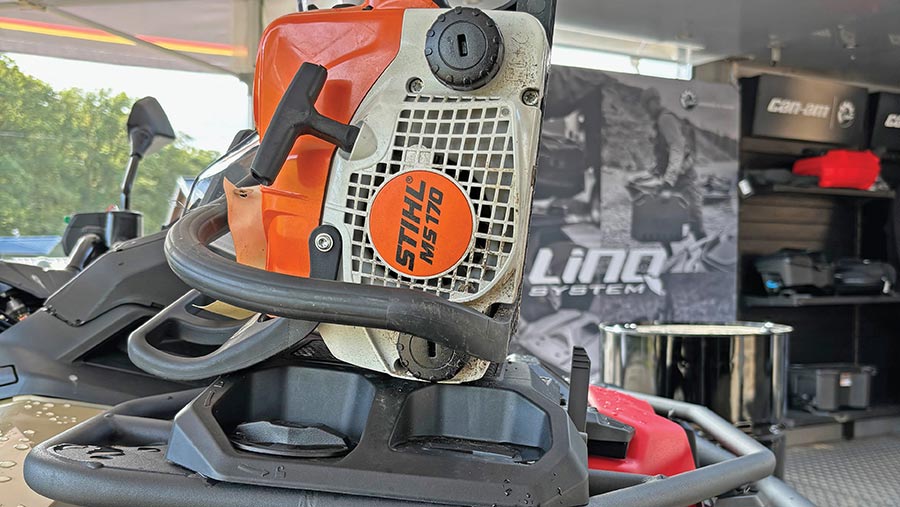
Chainsaw holder © James Andrews
Verdict
Can-Am hasn’t mucked around with the new Outlander Pro, delivering a powerful a bike that’s smooth, comfortable and comes with plenty of clever storage.
It’s a clear improvement over its predecessor, which was already pretty accomplished in these areas, and it has the added bonus of a less arduous maintenance regime.
All of its swish features make it a complex, electronic-laden piece of kit – there’s even an electrical control unit for the power steering. How all of this will stand up to repeated hard use and bathing in mud is something only time will tell.
Likes and gripes
Likes
- Powerful
- Good engine braking
- Easier maintenance
Gripes
- Huge proportions
- Confusing model range
- No adjustable engine braking on lesser models

